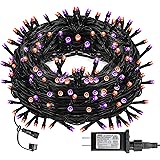The video above presents an intriguing concept: “Free Energy Light Bulbs – 220v using Potato.” However, a critical on-screen message from 0:04-0:07 immediately cautions, “WARNING!!! Do Not Repeat This Video. If You Do It Again and We Do Not Care About it.” This stark warning is not merely a formality; it highlights the profound dangers inherent in attempting to generate high-voltage electricity, such as **220V electricity**, from unconventional and unverified sources like a potato battery. While the allure of **free energy light bulbs** is powerful, understanding the true science behind electricity and, more importantly, adhering to stringent safety protocols is paramount for any experimentation.
Generating power from everyday items might sound like a fascinating science fair project, and indeed, making a potato battery to light a tiny LED is a classic experiment. However, scaling this up to power standard household appliances like light bulbs at **220V** involves a monumental leap in complexity and risk. This article aims to demystify the science, clarify the limitations of DIY power sources, and underscore why the video’s warning about replicating such experiments is critically important for personal safety.
Understanding the Allure of “Free Energy Light Bulbs”
The concept of “free energy” holds a powerful appeal for many, promising solutions to rising electricity costs and environmental concerns. Ideas like perpetual motion machines or devices that seemingly create more energy than they consume have captivated inventors and dreamers for centuries. These concepts tap into a universal human desire for abundance and self-sufficiency, making claims of generating high voltage, perhaps even enough for **free energy light bulbs**, from simple materials incredibly compelling.
However, the laws of physics, particularly the conservation of energy, unequivocally state that energy cannot be created or destroyed, only transformed from one form to another. Any system that claims to produce “free energy” without an input source is, by definition, outside the bounds of established scientific understanding. This fundamental principle is crucial when evaluating seemingly miraculous power generation methods.
The Real Science Behind a Potato Battery: Limitations, Not Miracles
A potato battery is a legitimate, albeit low-power, electrochemical cell. It functions by using two different metals, typically zinc and copper, inserted into a potato, which acts as an electrolyte due to its phosphoric acid content. The chemical reaction between the metals and the acid generates a small electrical potential difference.
- **Generating Minimal Voltage:** A single potato battery can produce approximately 0.5 to 0.9 volts (V) and a very low current, typically in the milliamps (mA) range. To put this into perspective, a standard AA battery generates 1.5V, and a small LED might require around 2-3V and 20mA to light up.
- **The Need for Series Connections:** To increase the voltage output, multiple potato batteries must be connected in a series circuit. This means linking the copper of one potato to the zinc of the next. To reach even 12V, which is still far from the claimed **220V**, you would need over a dozen potatoes connected in series.
- **Powering Small Devices:** Practical, real-world applications of potato batteries are limited to extremely low-power devices. Examples include powering a tiny digital clock, a small calculadora, or a very faint LED for a short duration. These are effective and safe educational tools for demonstrating basic electrical principles, not viable energy sources for household lighting or appliances.
The idea of powering multiple **light bulbs** at a robust **220V** using a simple potato setup fundamentally misunderstands the scale of power required and the limitations of electrochemical reactions in organic materials. The energy density of a potato is incredibly low, making it an impractical source for significant power output.
The Dangerous Discrepancy: Why 220V from a Potato is a Hazard
The claim of achieving **220V electricity** from a potato is not only scientifically improbable but also introduces significant safety concerns. Consider the sheer number of potatoes that would be required to reach such a voltage. If each potato yields an average of 0.7V, you would need over 314 potatoes connected in series (220V / 0.7V per potato) just to achieve the voltage. This doesn’t even account for the extremely low current, which would be insufficient to power any standard light bulb, let alone keep it illuminated effectively.
- **Impracticality and Inefficiency:** Such a massive setup would be unwieldy, costly, and incredibly inefficient compared to any conventional power source. The internal resistance of so many potatoes would quickly dissipate any generated energy as heat, leaving minimal power for the intended load.
- **Fundamental Physics Limitations:** The energy required to light a standard 60-watt incandescent bulb at 220V is substantial (P = V*I, so I = P/V = 60W/220V ≈ 0.27 Amperes or 270 mA). A single potato battery produces a tiny fraction of this current. Even with hundreds of potatoes, achieving this current while maintaining 220V would be an engineering impossibility with simple potato cells.
- **The Risk of Misleading Demonstrations:** Videos or claims that appear to achieve such feats often rely on hidden power sources, deceptive wiring, or misinterpretations of electrical principles. These can be incredibly dangerous, as they encourage replication by individuals who may not understand the underlying risks.
Therefore, the concept of powering **free energy light bulbs** at high voltage using potatoes should be approached with extreme skepticism and a strong understanding of electrical safety. The on-screen warning in the video is a crucial directive, indicating the potential for serious harm if such experiments are attempted without proper knowledge and equipment.
Electrical Safety 101: Why High Voltage Demands Caution
Electricity, particularly **220V electricity**, can be lethal. Respecting its power is not about fear, but about informed caution. The human body is a conductor, and an electrical current passing through it can cause severe injury or death. This is precisely why the video’s warning should be taken very seriously.
- **Understanding the Danger:** Both voltage (the “push” of electrons) and current (the flow of electrons) contribute to the danger of an electrical shock. While voltage provides the potential for current to flow, it is the current flowing through the body that causes harm. Even small currents at high voltages can be deadly.
- **Shock Hazards and the Body:** When electric current passes through the body, it can interfere with nerve signals, cause muscles to contract uncontrollably (making it impossible to let go of a live wire), and disrupt the heart’s rhythm, leading to cardiac arrest. Burns, both internal and external, are also common.
- **The Importance of Proper Insulation and Wiring:** Household wiring, designed for **220V**, uses robust insulation and is installed by certified electricians to minimize risks. Attempting to create high-voltage circuits with improvised materials like potatoes, which lack proper insulation or safety features, exponentially increases the risk of accidental contact and shock.
- **No Shortcuts to Safety:** There are no shortcuts when dealing with significant electrical potentials. Experimenting with high voltages requires specialized training, safety equipment (like insulated tools and gloves), and working within controlled environments. Recreational or unsupervised attempts, especially based on unverified video claims, are highly irresponsible and incredibly dangerous.
Any project involving **220V** or higher should only be undertaken by qualified professionals. The risks associated with attempting to build high-voltage devices without proper training and equipment far outweigh any potential “discovery” or perceived benefit from a DIY approach to **free energy light bulbs**.
Debunking “Free Energy”: Cultivating Critical Thinking
The world of science is built on curiosity and experimentation, but it is also grounded in empirical evidence and established laws of nature. Claims of “free energy” directly challenge these fundamental principles, making critical thinking an essential tool for navigating such assertions.
- **The Scientific Method:** Always ask for reproducible evidence. Can the experiment be replicated by independent observers with the same results? Are the measurements accurate and verifiable? True scientific discoveries are open to scrutiny and validation.
- **Conservation of Energy:** This foundational law states that energy cannot be created or destroyed. Any device that purports to generate more energy than it consumes, or to run indefinitely without an energy input, violates this law. Skepticism is warranted when such claims are made.
- **Sources of Information:** When encountering unusual claims, especially those involving energy, always consider the source. Is it a reputable scientific journal, an educational institution, or an individual making extraordinary claims without peer review or scientific backing?
Encouraging safe, educational science projects is vital, but equally important is fostering a critical mindset that questions unproven claims. True innovation comes from understanding and working within the laws of physics, not from attempting to circumvent them with potentially dangerous, unverified experiments.
Real-World Renewable Energy: Safe and Sustainable Solutions
While the concept of **free energy light bulbs** from potatoes is a dangerous fantasy, the pursuit of sustainable and efficient energy solutions is a very real and important endeavor. Legitimate renewable energy sources like solar, wind, and hydropower offer practical, safe, and effective ways to generate electricity, including **220V electricity**, for homes and industries.
- **Solar Power:** Photovoltaic panels convert sunlight directly into electricity. This is a mature technology, widely adopted, and constantly improving in efficiency.
- **Wind Power:** Wind turbines harness the kinetic energy of wind to generate electricity. These large-scale installations are a significant source of clean power in many regions.
- **Hydropower:** Utilizing the force of moving water to turn turbines remains one of the oldest and most reliable forms of renewable energy.
These proven technologies are developed and installed by trained professionals who adhere to strict safety standards and electrical codes. They represent the true path to sustainable energy, relying on sound scientific principles and rigorous engineering, ensuring both efficiency and, critically, safety for those who use and work with them.
As you explore the fascinating world of electricity and energy, always prioritize safety. The video’s warning about replicating such experiments is a crucial reminder that while scientific curiosity is admirable, it must always be balanced with an understanding of potential dangers. Never attempt to construct or experiment with high-voltage setups like those that claim to deliver **220V electricity** from unconventional sources without proper training, supervision, and adherence to established safety protocols. Instead, embrace the validated and safe avenues for exploring electricity and sustainable energy, ensuring your endeavors are both educational and secure, rather than pursuing dangerous myths about **free energy light bulbs**.










